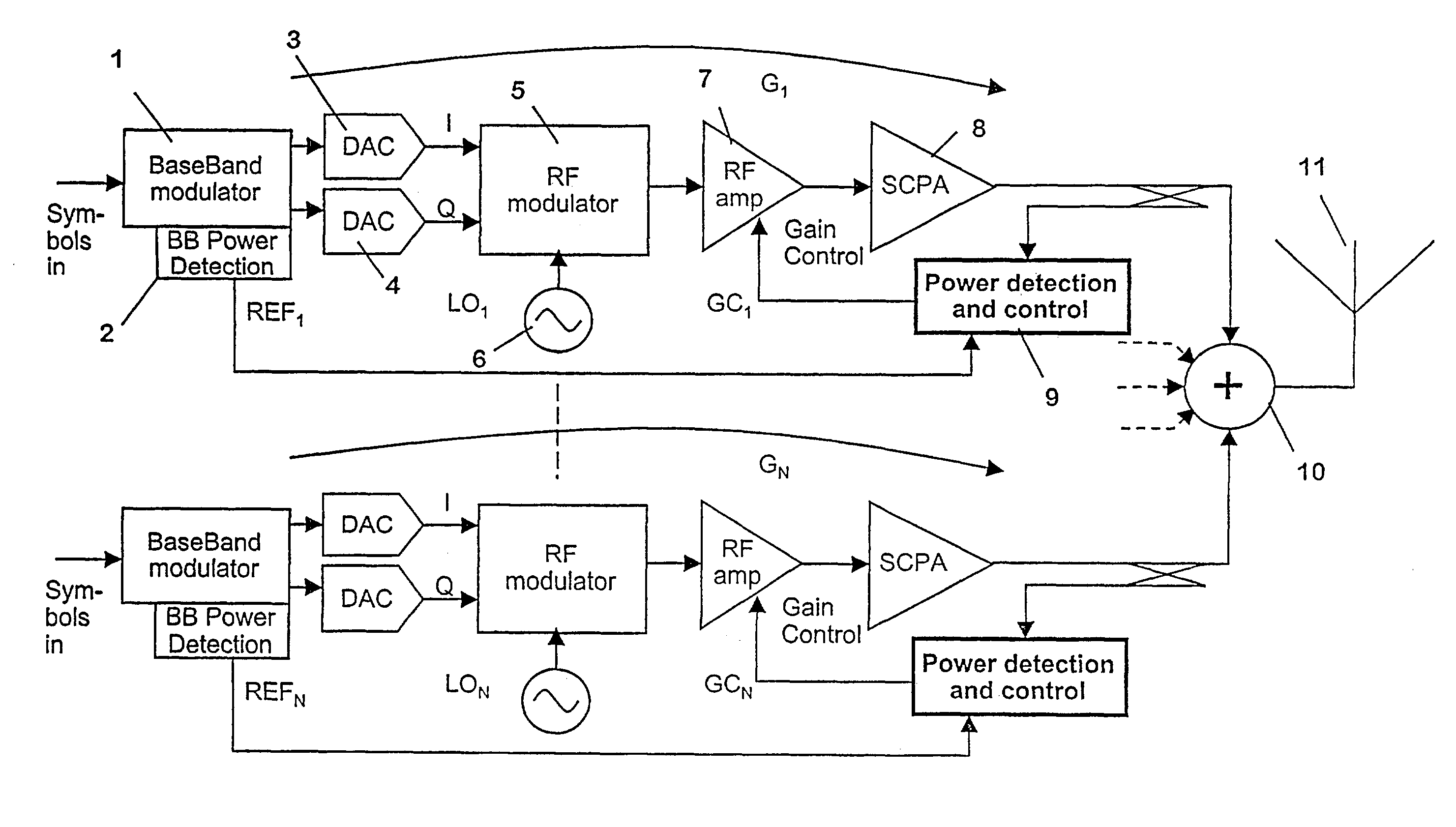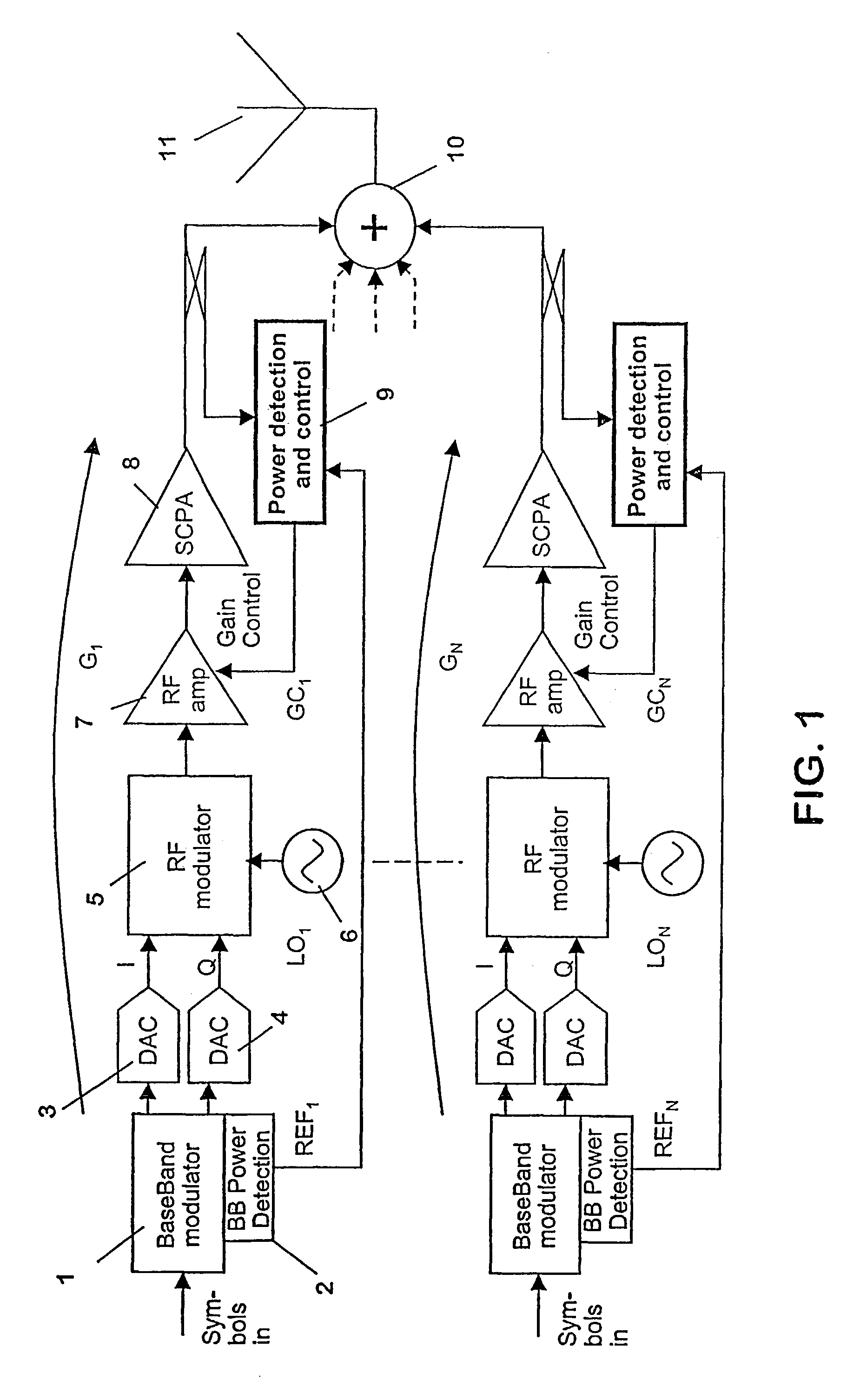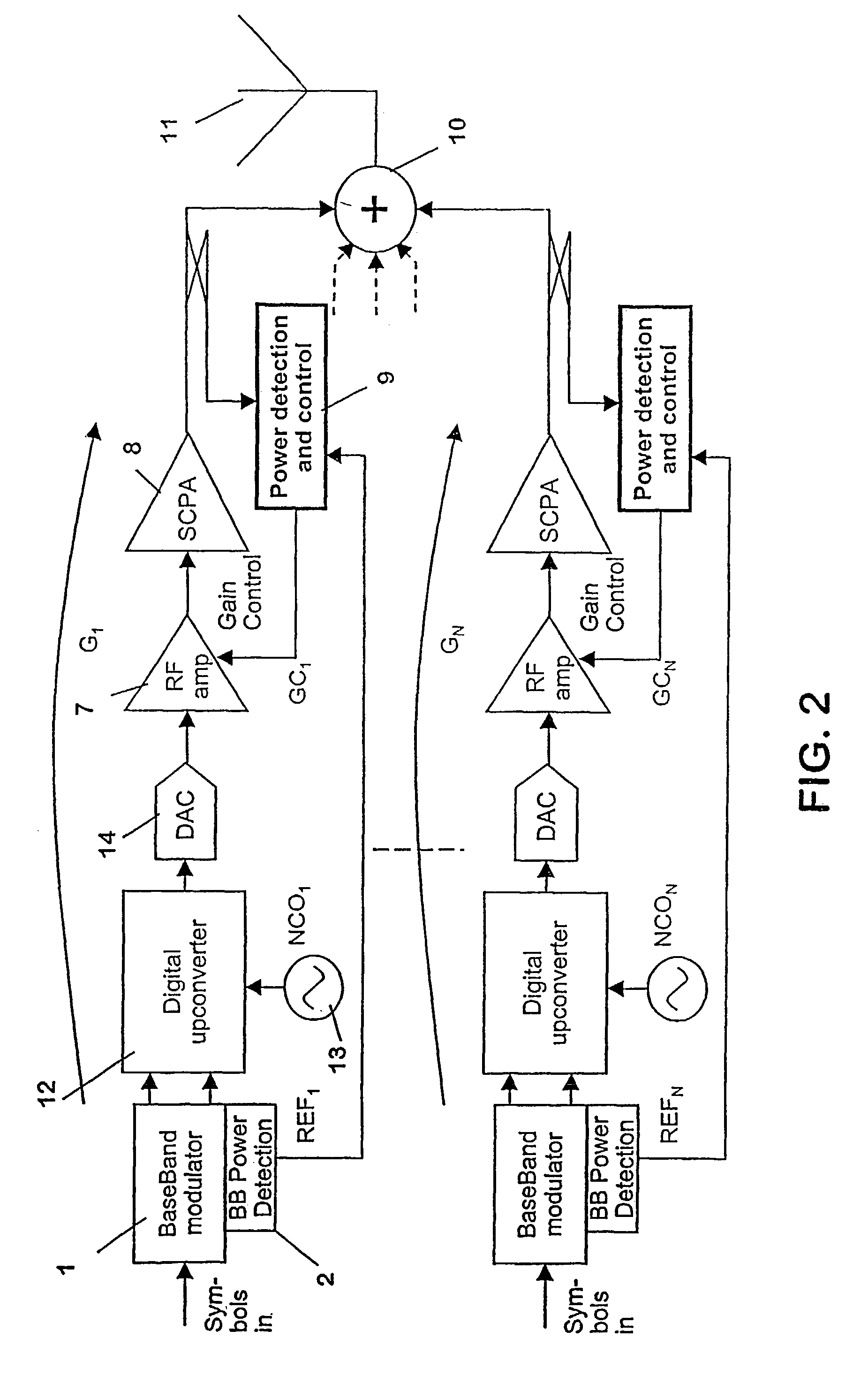Methods for determining the gains of different carriers, radio transmission units and modules for such units
a radio transmission unit and carrier technology, applied in the direction of transmission monitoring, power management, wireless communication, etc., can solve the problems of high-quality signal generation at ghz frequencies, loss of output power, and difficulty in determining the gain of different carriers, so as to achieve the effect of simple determination of separate radio frequency gain
- Summary
- Abstract
- Description
- Claims
- Application Information
AI Technical Summary
Benefits of technology
Problems solved by technology
Method used
Image
Examples
Embodiment Construction
[0066]FIGS. 1 and 2 have already described with reference to the background of the invention.
[0067]FIGS. 3 and 4 each show a block diagrams of a different embodiment of multi-carrier base station transmitters in which the first alternative of the invention can be employed advantageously.
[0068]FIG. 3 is a multi-carrier base station transmitter based on RF IQ modulation like the conventional base station transmitter shown in FIG. 1. It equally comprises for each of N carriers a baseband modulator 1 connected via two digital-to-analogue converters 3, 4 and an RF modulator 5 to a gain variable radio amplifier 7. Each baseband modulator 1 is moreover connected to a baseband power detection unit 2 and each RF modulator 5 to a local oscillator (LO) 6. In contrast to FIG. 1, however, the output of each RF amplifier 7 is not connected to a dedicated SCPA but via a summation unit 10 to a single multi-carrier power amplifier (MCPA) 15. The output of the MCPA 15 is connected to a transmit anten...
PUM
 Login to View More
Login to View More Abstract
Description
Claims
Application Information
 Login to View More
Login to View More - R&D
- Intellectual Property
- Life Sciences
- Materials
- Tech Scout
- Unparalleled Data Quality
- Higher Quality Content
- 60% Fewer Hallucinations
Browse by: Latest US Patents, China's latest patents, Technical Efficacy Thesaurus, Application Domain, Technology Topic, Popular Technical Reports.
© 2025 PatSnap. All rights reserved.Legal|Privacy policy|Modern Slavery Act Transparency Statement|Sitemap|About US| Contact US: help@patsnap.com



